testsetset
James Gwertzman started PlayFab to provide cloud-based tools and services for game developers, offloading the server infrastructure grunt work so developers could focus on games. In 2018, Microsoft bought PlayFab and integrated it into its Azure cloud services and renamed it Microsoft Game Stack. Now Gwertzman serves as general manager of Microsoft Game Stack, which continues to simplify cloud gaming services for developers.
In that position, Gwertzman gets a download on how thousands of games are developed and run efficiently on a variety of platforms. And he shared some of that knowledge in a recent press dinner in San Francisco.
We talked about ideas that were close to Gwertzman’s expertise like live services, where the game developer’s role is more like nightclub impresario, as well as expansive ideas about games such as how to reach the 2.8 billion people in the world who have played a game before. And we discussed the future of game development.
We talked in a big group, with Gwertzman handling questions from a half-dozen game journalists at once. So I’ve categorized the questions as journalists and the answers as Gwertzman. You’ll find, however, that the journalists expressed their own points of view as often as they asked questions. And, in fact, after Gwertzman introduced himself, he turned the tables and asked us a question. So it was an interesting evening with a long conversation about games, and I’ve edited for clarity and brevity.
June 5th: The AI Audit in NYC
Join us next week in NYC to engage with top executive leaders, delving into strategies for auditing AI models to ensure fairness, optimal performance, and ethical compliance across diverse organizations. Secure your attendance for this exclusive invite-only event.
Please check out the edited version below.
How games have changed in the modern era
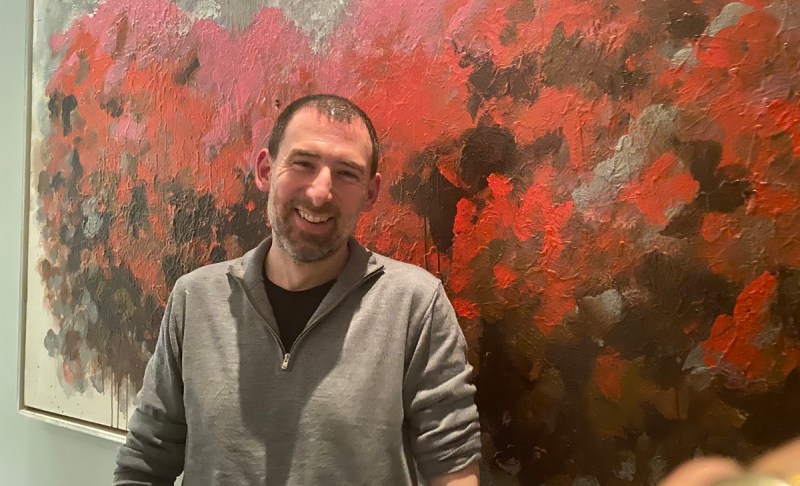
Above: James Gwertzman is general manager of Microsoft Game Stack.
James Gwertzman: I was at Popcap in China for a while, doing free-to-play. I was at EA for a while after Popcap was acquired. I’ve been around gaming for a while. I started Playfab five or six years ago, because I saw the shift in gaming from games as packaged goods to games as services. I saw a need — all my friends who were building games as services had this need for backend server infrastructure. I saw an opportunity. When I was still at EA, they were building a lot of tech from scratch and it often didn’t work very well. I saw an opportunity to build a platform for live games, which became Playfab.
About two years ago, Microsoft acquired Playfab, because Microsoft was starting to realize that the cloud was more and more important for game operations. Given that Microsoft has Azure and a 30- or 40-year legacy for making games, we had an opportunity to take a bigger role in providing cloud services for the game developers. Playfab came in. Now that we’re two years into the integration, I’m starting to see more opportunities to try and pull more of these development services into Azure. Going beyond things like hosting multiplayer game servers, but doing analytics and running things like Github. There’s an opportunity for things like passive management. This is an interesting shift going on.
We want to chat about where we think the game industry is going. I’ll share some thoughts I have on what the trends are. But I’m also interested — we at Microsoft are genuinely trying to put our growth mindset on and think about where the opportunities are. Where can we play a bigger role? How can we help? And not just — normally, this is a year when Scarlett is coming, and we’re focused on building the next generation of Xbox. We have xCloud coming. But we’re looking beyond those. Not just providing services for those new devices, but for the broader gaming ecosystem.
With that as the context, I’ll share my big insight. We’ve entered this era that we think of as modern game development. The notion of how you build games has changed. Fortnite characterized games as not just as a service now, but games as a community. The game is a platform, and the kinds of things you do in games are shifting. It’s not just playing anymore. It’s dancing. It’s buying things. It’s competing and streaming. The nature of gameplay has changed.
To kick things off, where do you see–how is the role of the game developer changing? How are games themselves changing? What are the next big ways in which games are shifting? Later we can talk about what the changes in the development process look like to make that possible. But I’ll start with that. How are games changing?
Discoverability is a huge problem
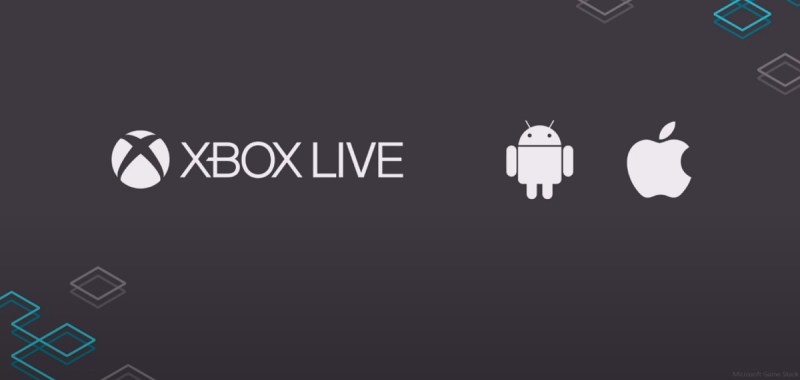
Above: Xbox Live is coming to iOS and Android.
Journalist: All I know is, every game developer I talk to is very concerned about making sure their game gets noticed. More than anything else in the last five years, the one thing that everyone is now more concerned about than ever is discoverability. How are they gonna get the word out? How much visibility can they get? How long do they have before they get buried and have to start cutting prices? I know you offer analytics and all kinds of stuff, but from where I stand, that’s the number one concern when it comes to the next generation of tools and services.
Gwertzman: Player acquisition and discoverability, yeah.
Journalist: Everything you can do outside the storefronts themselves to help them better understand where to best spend their time and money to get sales. There are so many games, and at this point there are so many audiences, that you know there’s a way. There’s enough of an audience for your game. You just have to get it in front of people who will buy it. That’s where they always run out of money, before they find it.
Takahashi: That’s why Unity bought all those services companies, to offer that on top of the game engine.
Gwertzman: I hear the same thing. I also hear a lot about the cost of acquisition, paid performance marketing. I also hear a lot of developers who don’t know how to do that. To them — how do I buy ads? How do I buy gamers? It’s a very scary thing that they don’t know how to do.
Microsoft’s goals in gaming
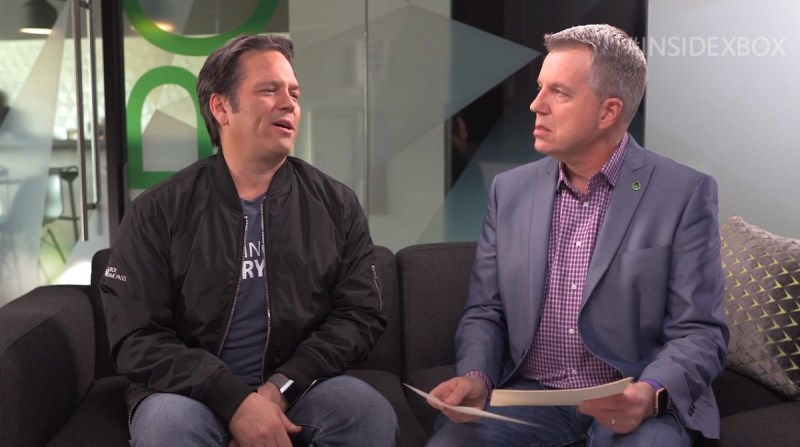
Above: Phil Spencer and Larry Hryb
Journalist: When you interpret what Satya and Phil Spencer are saying, how much of this do they want to enable? They’re much more open than the previous generation, but do they see a path to being really open, but also beating the hell out of Sony? Is there a trade-off?
Gwertzman: It is schizophrenic. Phil says, over and over again, that we in the gaming division need to find a way to reach the 2.8 billion gamers in the world that we believe there are. That’s a number that you hear over and over again in internal meetings. 2.8 billions gamers in the world, and we need to reach them all. We acknowledge that we will never reach more than 100 million of them by selling them an Xbox. The only way to reach the remaining 2.7 billion is something else, whether it’s xCloud or things like Playfab, where we’re not reaching them directly, but we’re providing technologies to help reach them. Or Azure, or something.
We don’t have a phone anymore. That didn’t work. Microsoft is not in the phone space. We don’t have a consumer phone offering. But we nonetheless aspire to be relevant. We think a lot about that.
Journalist: I do think that this is going to be a key point in the next generation. We’re already seeing the boundaries collapsing. I’m of the opinion that within a year or two, we’re going to be playing Game Pass games on the Nintendo Switch. We’re going to have MLB The Show on Xbox Series X. In 10 years, all of PlayStation and Sony and maybe even Nintendo — there might still be hardware, but effectively you’re all becoming service providers.
Gwertzman: Let me turn that around. If you were Microsoft, and you had a device like an Xbox, what would your strategy be? Would it be to build a wall around it and go for exclusive content? That’s certainly what the streaming services are doing. Netflix and Apple and CBS all compete by having exclusive content. They’re not all trying to serve the same content. Gaming, because it’s interactive, offers the possibility of shifting that, where it’s not just the content that makes you unique. It could be the community. It could be your safety. It could be the lack of toxicity. There are lots of factors that might make your service different from someone else’s service.
How can Microsoft win in games?
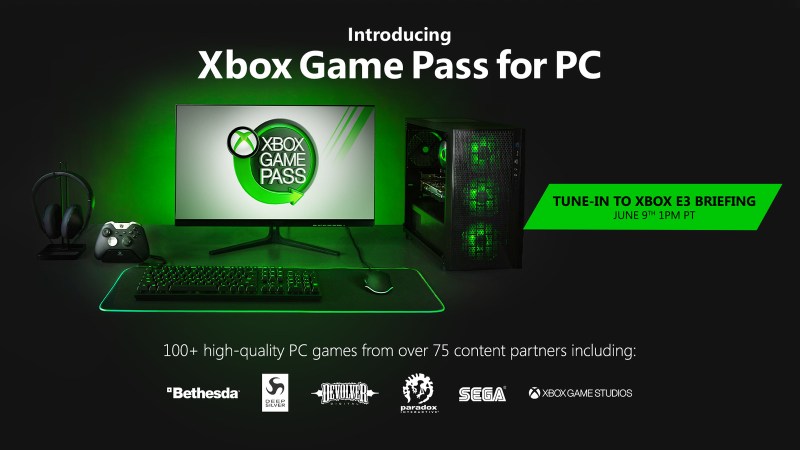
Above: Microsoft’s expanding Xbox Game Pass with around 50 games and new bonuses.
Gwertzman: My question would be, what would you do? Would you go for exclusive content, or do you see other ways to make your X better than the other guy’s X?
Journalist: I think Microsoft is trying to beat everyone to the punch with the all-encompassing service that gives people as many games as they can possibly digest, on as many platform as they possibly can. And then Sony or Nintendo inevitably play catch-up. Or Google. Google already tried to beat you to the punch, but they haven’t been doing so great. I think Microsoft has very clearly seen that — I’m telling you what your business model is. But I think Microsoft has seen that the business model going forward is Game Pass. You need to get Game Pass on as many platforms as possible. It’s not a bad plan, honestly.
Gwertzman: Game Pass is important, no question about that. That’s a key part of our strategy. It’s funny, because — again, I sit in a world where, if Game Pass is a consumer offering, I look at, what is the developer offering? How do we make Azure, Playfab, Microsoft compelling for developers.
Unity, arguably, is the one thing that every developer uses. It’s either Unity or Unreal now. They’ve been very effective. But both of them are struggling in the cloud. Unity has done a lot of acquisitions, but they haven’t really made it through yet, and they don’t have their own cloud. There’s this question of what the thing for developers looks like. How does that — how do we unleash creativity? How do we move the industry forward, and at the same time, build the business?
Takahashi: I don’t think Sony and Nintendo should be Microsoft’s concern. I think it’s more the big guys. It’s Amazon. It’s Google, Facebook, and Apple. Amazon is the most dangerous, with Amazon Prime. Ask for $10 a month and throw everything into it. They have Twitch Prime.
Journalist: And they’re trying to put games on Fire TV.
Takahashi: Well, Fire TV I’m not worried about. But it feels like the things you need to do to compete with something that’s $10 a month, or free in Google and Facebook’s case — that’s what Microsoft needs to worry about. How do you structure the game business to recognize that? That’s the real enemy. Game Pass is very important, making sure it gets all the traction toward getting Microsoft its subscriptions every month.
Gwertzman: In the world of Game Pass, one of the things I’m personally involved with right now is helping on the PC side. Microsoft announced PC Game Pass, and it turns out that when we’re trying to get games onto PC Game Pass, the biggest challenge is actually — all these games were built for Steam. There’s a bunch of entrenched technology there. One of the biggest requests I got at GDC last year from developers was about helping them get off of Steamworks. They want to be on the Epic store. They want to be on the Discord store. They want to be on Game Pass. But they have a hard dependency on Steamworks. They need an alternative open platform version that will work across all of the above. I started hearing that about a year ago at GDC.
My interpretation of that is that for developers, for a long time Steam was the PC store, full stop. There’s enough competition now that people are looking for cross-platform, open alternatives that will work with Steam — because that’s still important — but will also allow them to work with these other things. That’s not a secret. That’s something we’re very much thinking about. How do we make services that will work on all different platforms? That will work on Steam, but also Epic and others. Things you can use for chat, for multiplayer hosting, for buddy lists, for identity, for analytics and so on.
The game developer as nightclub impresario
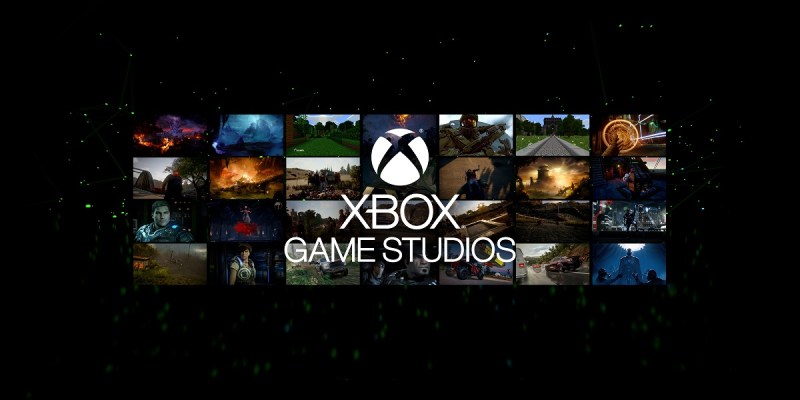
Above: Xbox Game Studios is the new name for Microsoft Studios.
Journalist: One of the things that, talking to — especially indie, large indie to small indie developers — the feeling I get is that a lot of people feel like the live services game trend. A, there’s only a limited number of slots for large live games to succeed, and B, there’s not a lot of — it’s just the latest fad. If you look at all the people that chased MMOs around 2004, and the people who chased Call of Duty, 80 percent of those, even the fast follows — Fortnite is the exception in the battle royale space. But people are leading the other way and going more to something like Untitled Goose Game, making smaller, more manageably budgeted games that don’t require massive online services.
Journalist: You must hear this better than any of us. I talk to devs and I hear that it’s hit or miss to get noticed. But you must work with devs who manage live games of all scopes and sizes.
Gwertzman: I see a skewed view of the world. You’re right. We talk predominantly to devs who are doing live games. The view I have is games that are — people who want to go live, and they — the thing about live games is it pretty radically shifts the production process. Even Microsoft, our first-party studios are trying to figure out how to build games as services now. Halo is trying to figure out what that looks like, for example.
Building a game as a service — we’re seeing it’s not only a change in the technology. It’s a change in the production process and a change in the studio mindset. That mindset shift is the hardest of all. It can take five or six years for an entrenched studio to change the mindset around development. It’s no longer about having a big idea and putting it out there and the players will like it. It’s more about — it goes from game designer as movie director to game designer as nightclub impresario. Now the game is an opportunity for players to meet each other. The game is an opportunity to have meaningful player interactions. You’re designing very differently when that is the goal versus when you have a story you want to tell or a vision you want to share.
Journalist: Sticking with the nightclub metaphor, it’s a chance to bring in outside acts. Fortnite brought Star Wars in for a day.
Gwertzman: That’s it. It’s a cabaret, or a cruise ship. You’re constantly reskinning and updating. On one hand, to your point, it’s more expensive and harder, because you have to invest in this continuing operations team. On the other hand, you don’t have to put it all up front. Idle Miner Tycoon is one of the early games on Playfab. They launched after three weeks of development. It looked like shit. But they’d update every week for two years in a row. If you watched the numbers, they clawed their way up. I don’t know, to your point, how replicable the model is. Maybe it’s lightning in a bottle. But they clawed their way to success. Games that get that right can ride that MVP curve up, as opposed to coming out up here and watching your share steadily decline.
Will 5G gaming be a big deal?

Above: Google’s Stadia game controller.
Journalist: Do you think 5G is important in that it will bring more people online, or make mobile connectivity more reliable and fast? People talk about 5G as a game-changer and I just don’t see it.
Gwertzman: I’m not close enough to mobile to know. Personally, I’m not sure either. I’m very interested to know what everyone at the table thinks about 5G. I think 5G for sure will offer lower latency on mobile devices, and it will increase bandwidth. It will do so in parts of the world that haven’t had high bandwidth up to now. Africa, for example, may go straight to 5G. Technologies like game streaming, xCloud or Stadia, may be — this is an open question. Will things like 5G and game streaming converge and open up whole new swathes of the world to prestige or premium gaming that haven’t had that access until now?
Journalist: Do you see at 5G solving one of the infrastructure problems for cloud gaming?
Gwertzman: Yes.
Journalist: You’re banking on that?
Gwertzman: That’s one of the bets. Especially if you can move the game servers to the edge. Instead of having it all in two data centers, if you can put them pretty far out to the edge, in some cases even in cell towers, you can get close to where players are.
Takahashi: Is Stadia going to benefit? Google’s problem right now is Comcast. If they have games that are consuming — was it 100 megabits a minute or megabytes a minute? Comcast is going to complain about that. Here’s your data cap. The players are going to go over it if they play Red Dead Redemption 2 for a while.
Journalist: But that’s bogus. If I download 100 gigs of Red Dead Redemption 2 and play that for 30 hours, it will be way cheaper at a gig an hour of video than it was as a 120-gigabyte download or whatever it was. The amount of data consumed to stream the video for the 10 or 20 hours most people will play the game is way less than downloading the entire game. Assuming you’re not Fortnite.
Takahashi: But then you’re still paying the regular price, as opposed to a subscription for Stadia. If Google can bypass Comcast, it’s a different story. Then Google doesn’t care about data caps. They can afford to make this business model work. 5G gets them into the home and gets them out of the home on a Google-owned network, instead of using Comcast. I think that’s a big deal strategically as far as enabling cloud gaming in homes.
Gwertzman: I think 5G is one of the things that will help with streaming. When the question goes — will it go beyond that? Will it just be more people having access to high-bandwidth mobile, or will it actually usher in whole new types of games? That’s one of my questions. What will emerge that we haven’t seen yet? Will there be more AR games, more cloud-based games?
The game I’m most excited about next year is Microsoft Flight Simulator. I loved Flight Simulator as a kid. On my Apple IIe I was playing Flight Simulator. I haven’t had a chance to get my hands on the new one yet, but I’ve talked to people who have, and they say it’s mind-blowing. You’re flying through real-world conditions, real-world weather. The entire world is satellite mapped. To me, that’s the ultimate cloud game. You’re not streaming. You play on your own device. But the data set you fly through is streamed continuously through the network. That’s cool. I’m very curious about where that trend takes us.

